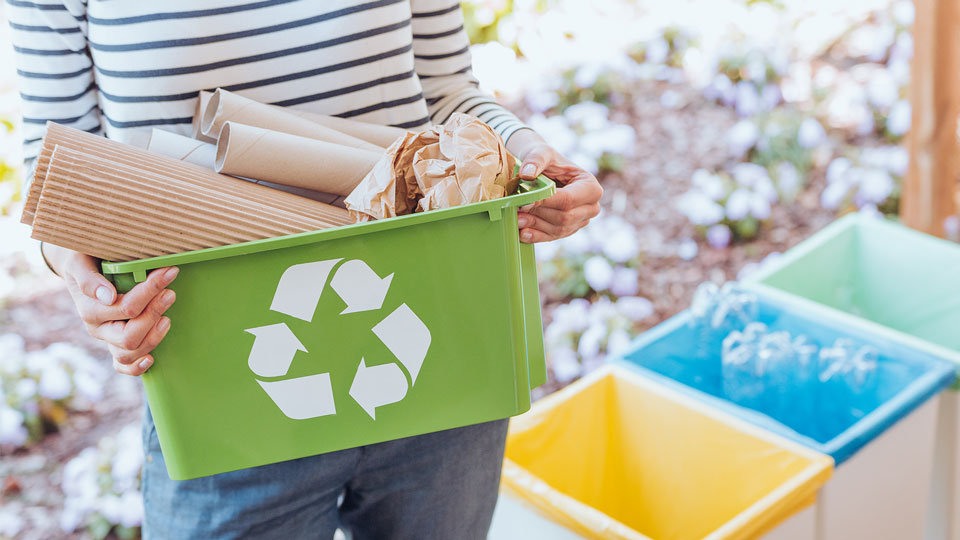Recycled Paper
Recycled paper is produced from waste paper, reducing the need for virgin wood pulp and potentially lowering greenhouse gas emissions associated with paper production. However, the environmental benefits of recycled paper are complex and depend on various factors.

Recycled Paper Process (How to Start An LLC)
View open jobs in this Solution
Example Organizations
- Environmental Paper Network - Coalition promoting sustainable paper consumption and production.
- Forest Stewardship Council (FSC) - Promotes responsible management of the world's forests.
- Natural Resources Defense Council - Environmental advocacy organization working on sustainable resource use.
Overview
Recycled paper has gained popularity due to increased awareness of environmental issues. It's used in various applications including newspapers, magazines, office paper, and packaging. While recycled paper production generally requires less energy and may emit fewer greenhouse gases compared to virgin paper, the environmental benefits can vary depending on factors such as transportation, processing methods, and the source of energy used in production.
- Environmental impact of paper - Wikipedia
- The State of the Global Paper Industry - Environmental Paper Network
Progress Made
Significant advancements have been made in recycled paper technology and adoption:
- Improved Pulping Technology: More efficient methods for breaking down waste paper into fibers for new products.
- Increased Usage: Substantial increases in recycled paper usage due to awareness and advocacy efforts.
- Industry Initiatives: Programs by organizations like the Paper Industry Association of Finland and Environmental Paper Network have promoted recycled paper adoption.
Solutions by Sector
Paper Manufacturing
- Recycled Content Paper: Producing paper with varying percentages of recycled content.
- De-inking Technology: Improving methods to remove ink from recycled paper.
- Energy-Efficient Processing: Developing more energy-efficient recycling processes.
Case Studies:
- Stora Enso, Finland: Produces paper with up to 100% recycled content (Stora Enso).
- Pratt Industries, USA: Operates paper mills using 100% recycled materials (Pratt Industries).
- UPM, Finland: Develops innovative recycled paper products (UPM).
Packaging
- Recycled Cardboard: Using recycled content in cardboard packaging.
- Recycled Paper Bags: Producing shopping bags from recycled paper.
- Molded Fiber Packaging: Creating packaging from recycled paper pulp.
Case Studies:
- DS Smith, UK: Produces sustainable packaging solutions using recycled fibers (DS Smith).
- Cascades, Canada: Manufactures eco-friendly packaging from recycled materials (Cascades).
- Ranpak, USA: Develops paper-based packaging solutions (Ranpak).
Office and Consumer Products
- Recycled Office Paper: Producing copy paper and other office supplies from recycled content.
- Recycled Notebooks and Stationery: Creating consumer products from recycled paper.
- Recycled Tissue Products: Manufacturing toilet paper and tissues from recycled fibers.
Case Studies:
- Seventh Generation, USA: Produces household paper products from recycled materials (Seventh Generation).
- Marcal Paper, USA: Manufactures 100% recycled paper products (Marcal).
- Essity, Sweden: Develops hygiene and health products using recycled fibers (Essity).
Lessons Learned
- Resource Conservation: Recycled paper can reduce the need for virgin wood pulp, potentially conserving forests.
- Certification Importance: Programs like Forest Stewardship Council (FSC) certification help ensure responsible sourcing and recyclability.
- Proper Recycling: Effective paper recycling can prevent methane emissions from landfills.
- Life Cycle Considerations: The environmental impact of recycled paper depends on various factors throughout its life cycle.
Challenges Ahead
- Infrastructure Gaps: Lack of recycling infrastructure in many areas hampers large-scale paper recycling.
- Cost Issues: Recycling paper can be more expensive than producing virgin paper due to collection, processing, and quality issues.
- Quality Concerns: Recycled paper may have lower quality than virgin paper due to fiber degradation.
- Environmental Trade-offs: Higher emissions may occur in paper collection, processing, and transportation.
- Market Demand: Demand for recycled paper products can be lower due to quality perceptions and cost.
Best Path Forward
- Research and Development: Invest in R&D to improve recycled paper technology and reduce costs.
- Public Education: Educate consumers about the benefits and limitations of recycled paper.
- Policy Support: Develop policies that incentivize paper recycling and use of recycled content.
- Infrastructure Investment: Improve recycling infrastructure to increase the supply of recyclable paper.
- Life Cycle Assessment: Conduct comprehensive life cycle assessments to better understand the environmental impacts of recycled paper.
Image credit: How to Start An LLC